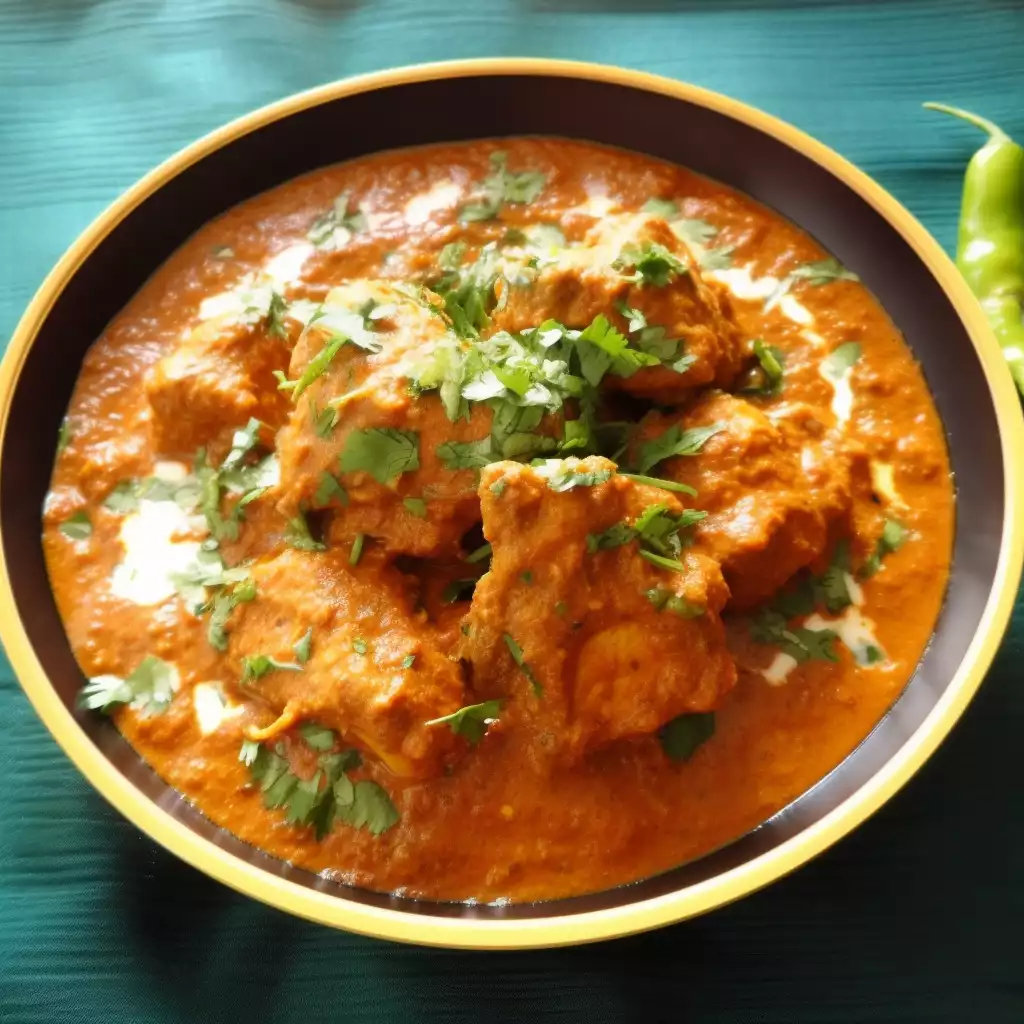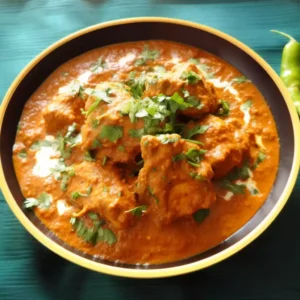
Amritsari Chicken Curry is a tantalizing dish that hails from the vibrant city of Amritsar, known for its rich culinary heritage in the heart of Punjab, India.
This curry, bursting with robust flavors and spices, encapsulates the essence of Punjabi cuisine, offering a delightful journey for your taste buds.
Originating from the streets of Amritsar, where food is not just sustenance but a celebration of life, this recipe embodies the warmth and hospitality of Punjabi culture.
Despite its complex flavors, this dish is surprisingly simple to prepare, making it an ideal choice for both beginners and seasoned cooks alike.
With its combination of tender chicken, aromatic spices, and creamy texture, Amritsari Chicken Curry promises to elevate your dining experience to new heights.
Whether enjoyed with steamed rice or freshly baked naan bread, this curry is sure to leave a lasting impression on your palate.
Expert Tip: For a richer texture, substitute cream or yogurt for the double cream garnish.
Chicken: Adds protein and heartiness to the dish, creating a satisfying meal.
Onions: Provide a sweet and savory base for the curry, enhancing its depth of flavor.
Tomatoes: Contribute acidity and richness to the curry, balancing the spices.
Garlic: Infuses the dish with a pungent aroma and savory taste, complementing the other ingredients.
Ginger: Adds warmth and earthiness to the curry, enhancing its overall complexity.
Green Chilies: Provide a subtle heat that elevates the dish without overpowering it.
Cumin Seeds: Offer a nutty and slightly bitter flavor, enhancing the aroma of the curry.
Coriander Powder: Adds a citrusy and floral note to the curry, enhancing its fragrance.
Turmeric Powder: Imparts a vibrant color and mild bitterness to the curry, as well as anti-inflammatory properties.
Chilli Powder: Provides heat and intensity to the curry, balancing the other flavors.
Garam Masala: A blend of aromatic spices that adds depth and complexity to the curry.
Fenugreek (Methi): Offers a slightly bitter taste and a hint of maple syrup-like sweetness, enriching the flavor profile.
Salt: Enhances the overall taste of the dish, bringing out the flavors of the other ingredients.
Oil: Used for sautéing and adds richness to the curry.
Water: Essential for creating the base of the curry and achieving the desired consistency.
Coriander: Fresh coriander leaves for garnish, adding a burst of freshness to the dish.
Double Cream: Optional garnish that adds a luxurious creamy texture to the curry, balancing the spices.
Expert Tip: Toast the whole spices like cumin seeds before adding them to the curry for a more intense aroma.
Expert Tip: Marinate the chicken in yogurt and a blend of spices for added tenderness and flavor.
Yes, boneless chicken can be used for this recipe. Adjust the cooking time accordingly as boneless chicken tends to cook faster.
Yes, Amritsari Chicken Curry can be made ahead of time and reheated before serving. In fact, the flavors often deepen and develop further when the curry is allowed to sit for a few hours or overnight.
No, garnishing with double cream is optional. It adds a creamy texture and richness to the curry, but the dish is delicious even without it.
Yes, feel free to adjust the amount of chili powder and green chilies according to your preference for spice.
Yes, leftover curry can be frozen in an airtight container for up to three months. Thaw overnight in the refrigerator before reheating.
Here are some more recipes for you to enjoy! If you my recipes don’t forget to rate and leave a comment.
If you have any recipe suggestions, please do not hesitate to ask me. A great way to stay in contact with me is through Instagram, Facebook, Twitter and YouTube. Don’t forget to tag me @CookwithNabeela in your recipe photos!

Subscribe now to receive my latest recipes directly in your inbox. Stay up-to-date and never miss out!

I love to cook! I want to share with you my favourite, delicious family-friendly recipes. I want to inspire you to create fantastic food for your family every day.
Latest comments (2)
Excellent recipe, nice mix of spices with a lovely flavour ,not too spicy or overpowering , definitely will be cooking it again .
I’m glad you liked the mix of spices and flavors. Let me know if you have any questions or if there’s anything else you’d like to try.